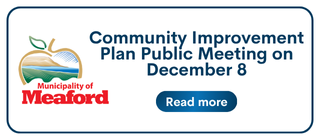 We are a week away from a provincial election, an election that we weren’t expecting until June of next year, however Premier Doug Ford opted to call an early election for the end of what has been a stormy February.
We are a week away from a provincial election, an election that we weren’t expecting until June of next year, however Premier Doug Ford opted to call an early election for the end of what has been a stormy February.
While many of us would have been quite happy to have left the next provincial election until next year, here we are just days away from election day. The most recent polling information that I have seen suggests that Ford’s Progressive Conservative party is holding on to a healthy lead, but the race has been tightening as the campaign has progressed.
An Abacus Data survey conducted for the Toronto Star shows the Progressive Conservatives with 41 percent support, while the Liberals have 28 percent, followed by the New Democrats at 21 percent, and the Green Party at 6 percent. The poll data suggests that the Tories have dropped five percentage points since early February, but all signs seem to be indicating that there won’t be much of a change at Queen’s Park after election day.
One thing has been clear during this winter election campaign, and that is that healthcare and the economy are the driving issues for Ontario voters.
Many Ontarians are worried about the future of healthcare in this province. Many cannot find a family doctor, a crisis on its own, and others have grave concerns about the privatization creeping into our system that we have been seeing in recent years. We Canadians pride ourselves on our universal healthcare system, and we don’t like it when we see American-style private healthcare creeping in.
As I wrote in last week’s print newspaper, 2.5 million Ontarians don’t even have a family physician. In Grey-Bruce there are reportedly 45,000 residents without a family doctor, which puts pressure on hospital emergency rooms as folks head there when not feeling well, when they should be able to visit a family physician.
We have all seen the stories in recent weeks of hundreds of folks lining up in stormy winter weather in Walkerton in hopes of securing a spot as a patient of a family doctor moving to the area. The new doctor was able to take on 500 patients, but the line was much, much longer than that. Some folks started lining up at two in the morning in hopes of finally finding a doctor for their family. Once the first 500 residents were added to the doctor’s patient list, the next 500 were placed on a wait list, and will possibly become patients of that doctor’s spouse, who will also be moving to the area and will soon take on new patients.
In recent years we have seen hospitals closed, wait times for procedures increasing, and privatization creeping in, and that rightly worries Ontario voters.
While healthcare is one of, if not the most prominent issue during this election campaign, there are other major issues facing Ontarians such as housing affordability and the economy, particularly given recent tariff threats from south of the border.
In every federal and provincial election that I can recall, the economy has always been a major issue, and a focus for voters, but healthcare joins the economy in this provincial election as a major concern for voters.
When it comes to the economy, our biggest current threat comes from south of the border, where the new Trump administration has threatened to levy heavy tariffs on Canadian goods.
As I wrote on this page on February 6, I must give credit to President Trump, as he has managed to unite Canadians of all political stripes in a way that we have not seen in decades. Conservatives, Liberals, and everyone in between has banded together with a pledge to fight back against the recent lunacy from the south.
As a Canadian who does not align myself with any political party, it has been somewhat refreshing to see leaders, representatives, and supporters of all political parties come together to push back against Trump’s threats.
Ontario’s premier has suggested that, given the new pressures from our neighbour to the south, his government is seeking a refreshed mandate in order to fight back, to defend Ontario in this unexpected trade war that President Trump has suggested wouldn’t need to happen if Canada would just become the 51st state.
Locally of course, the hydro-electric pumped storage plant proposed by TC Energy to be located on our local military base is a major issue for many voters in this riding, and many residents have grilled candidates to unearth their position on the contentious proposal.
While the collective votes across the province will decide which party forms the next provincial government, our job as voters is to elect our local representative.
Unfortunately there is no candidate meeting scheduled in Meaford, however there are all-candidate meetings being held in Markdale on February 21, and in Owen Sound on February 24.
Voters in Bruce-Grey-Owen Sound will have eight candidates on their ballots. In addition to the traditional four parties, the Progressive Conservatives (Paul Vickers), the Liberals (Selwyn Hicks), the NDP (James Harris), and the Green Party (Joel Loughead), there are also candidates running for the Libertarian, Alliance, New Blue, and the Stop the New Sex-Ed Agenda parties.
While election day is Thursday, February 27, voters can cast ballots by mail or by early voting.
Meaford voters can vote early from February 20 – 22 at the Meaford & St. Vincent Community Centre.
All of the information you will need regarding the upcoming vote can be found by visiting elections.on.ca.
Winter not the best time to hold an election of course, and perhaps the Premier is betting that a low voter turnout will work in his government’s favour. In spite of the inconvenience of a winter election, over the past few weeks we have seen concerned citizens, particularly regarding healthcare, mobilize, and they have been beating the drums about that important issue, and rightfully so. Healthcare isn’t the only issue facing us. Ontarians are also very concerned about the economy and about the trade issues with our largest trading partner, but it has been clear throughout this campaign that the state of healthcare in this province is perhaps the most important issue to voters.










